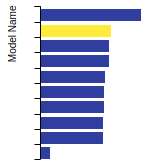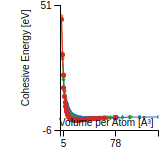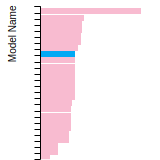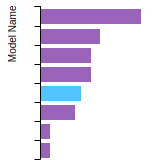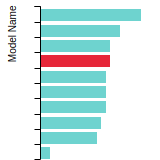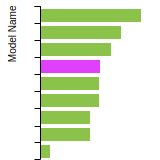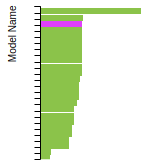 MEAM_LAMMPS_KimJungLee_2012_LiMg__MO_427397414195_002
MEAM_LAMMPS_KimJungLee_2012_LiMg__MO_427397414195_002
| Title
A single sentence description.
|
MEAM Potential for the Li-Mg system developed by Kim, Jung, and Lee (2012) v002 |
|---|---|
| Description
A short description of the Model describing its key features including for example: type of model (pair potential, 3-body potential, EAM, etc.), modeled species (Ac, Ag, ..., Zr), intended purpose, origin, and so on.
|
Interatomic potential for the Li-Mg binary system has been developed based on the second nearest-neighbor modified embedded-atom method formalism. The potential can describe various alloy behaviors (thermodynamic, structural and elastic properties) in reasonable agreement with experimental data or higher-level calculations. |
| Species
The supported atomic species.
| Li, Mg |
| Disclaimer
A statement of applicability provided by the contributor, informing users of the intended use of this KIM Item.
|
None |
| Content Origin | http://cmse.postech.ac.kr/home_2nnmeam |
| Contributor |
Jong-Kwan Lee |
| Maintainer |
Jong-Kwan Lee |
| Developer |
Young-Min Kim In-Ho Jung Byeong-Joo Lee |
| Published on KIM | 2023 |
| How to Cite |
This Model originally published in [1] is archived in OpenKIM [2-5]. [1] Kim Y-M, Jung I-H, Lee B-J. Atomistic modeling of pure Li and Mg–Li system. Modelling and Simulation in Materials Science and Engineering. 2012;20(3):035005. doi:10.1088/0965-0393/20/3/035005 — (Primary Source) A primary source is a reference directly related to the item documenting its development, as opposed to other sources that are provided as background information. [2] Kim Y-M, Jung I-H, Lee B-J. MEAM Potential for the Li-Mg system developed by Kim, Jung, and Lee (2012) v002. OpenKIM; 2023. doi:10.25950/bb56ebce [3] Afshar Y, Hütter S, Rudd RE, Stukowski A, Tipton WW, Trinkle DR, et al. The modified embedded atom method (MEAM) potential v002. OpenKIM; 2023. doi:10.25950/ee5eba52 [4] Tadmor EB, Elliott RS, Sethna JP, Miller RE, Becker CA. The potential of atomistic simulations and the Knowledgebase of Interatomic Models. JOM. 2011;63(7):17. doi:10.1007/s11837-011-0102-6 [5] Elliott RS, Tadmor EB. Knowledgebase of Interatomic Models (KIM) Application Programming Interface (API). OpenKIM; 2011. doi:10.25950/ff8f563a Click here to download the above citation in BibTeX format. |
| Citations
This panel presents information regarding the papers that have cited the interatomic potential (IP) whose page you are on. The OpenKIM machine learning based Deep Citation framework is used to determine whether the citing article actually used the IP in computations (denoted by "USED") or only provides it as a background citation (denoted by "NOT USED"). For more details on Deep Citation and how to work with this panel, click the documentation link at the top of the panel. The word cloud to the right is generated from the abstracts of IP principle source(s) (given below in "How to Cite") and the citing articles that were determined to have used the IP in order to provide users with a quick sense of the types of physical phenomena to which this IP is applied. The bar chart shows the number of articles that cited the IP per year. Each bar is divided into green (articles that USED the IP) and blue (articles that did NOT USE the IP). Users are encouraged to correct Deep Citation errors in determination by clicking the speech icon next to a citing article and providing updated information. This will be integrated into the next Deep Citation learning cycle, which occurs on a regular basis. OpenKIM acknowledges the support of the Allen Institute for AI through the Semantic Scholar project for providing citation information and full text of articles when available, which are used to train the Deep Citation ML algorithm. |
This panel provides information on past usage of this interatomic potential (IP) powered by the OpenKIM Deep Citation framework. The word cloud indicates typical applications of the potential. The bar chart shows citations per year of this IP (bars are divided into articles that used the IP (green) and those that did not (blue)). The complete list of articles that cited this IP is provided below along with the Deep Citation determination on usage. See the Deep Citation documentation for more information. 
42 Citations (32 used)
Help us to determine which of the papers that cite this potential actually used it to perform calculations. If you know, click the .
USED (high confidence) Y. Hu and D. Kochmann, “Atomistic insight into three-dimensional twin embryo growth in Mg alloys,” Journal of Materials Science. 2023. link Times cited: 1 USED (high confidence) T. Krauskopf, B. Mogwitz, C. Rosenbach, W. Zeier, and J. Janek, “Diffusion Limitation of Lithium Metal and Li–Mg Alloy Anodes on LLZO Type Solid Electrolytes as a Function of Temperature and Pressure,” Advanced Energy Materials. 2019. link Times cited: 184 Abstract: The morphological instability of the lithium metal anode is … read more USED (high confidence) G. Zu and S. Groh, “Effect of segregated alloying element on the intrinsic fracture behavior of Mg,” Theoretical and Applied Fracture Mechanics. 2016. link Times cited: 3 USED (high confidence) S. Karewar, N. Gupta, S. Groh, E. Martinez, A. Caro, and S. G. Srinivasan, “Effect of Li on the deformation mechanisms of nanocrystalline hexagonal close packed magnesium,” Computational Materials Science. 2017. link Times cited: 19 USED (low confidence) M. Phuthi et al., “Accurate Surface and Finite Temperature Bulk Properties of Lithium Metal at Large Scales using Machine Learning Interaction Potentials,” ArXiv. 2023. link Times cited: 2 Abstract: The properties of lithium metal are key parameters in the de… read more USED (low confidence) J. Ji and B.-J. Lee, “Analyzing the effect of Li/Ni intermixing on Ni-rich layered cathode structures using atomistic simulation of the Li–Ni–Mn–Co–O quinary system,” Journal of Power Sources. 2023. link Times cited: 1 USED (low confidence) S. Luo et al., “Thermal Behavior of Li Electrode in All-Solid-State Batteries and Improved Performance by Temperature Modulation,” SSRN Electronic Journal. 2022. link Times cited: 3 USED (low confidence) Z. Qin, R. Wang, S. Li, T. Wen, B. Yin, and Z. Wu, “MEAM interatomic potential for thermodynamic and mechanical properties of lithium allotropes,” Computational Materials Science. 2022. link Times cited: 4 USED (low confidence) J. Ji and B.-J. Lee, “A second nearest-neighbor modified embedded-atom method combined with a charge equilibration interatomic potential for the Li–Ni–O ternary system and Li diffusion in lithium-ion battery cathode structure,” Journal of Power Sources. 2022. link Times cited: 2 USED (low confidence) A. Sergeev, A. A. Rulev, Y. O. Kondratyeva, and L. Yashina, “Computational insight into the grain boundary structure and atomic mobility in metallic lithium,” Acta Materialia. 2022. link Times cited: 3 USED (low confidence) N. Li, L. Pan, L. Wang, Y.-qi Huang, and D. Yuan, “Molecular Dynamics Study on the Wettability of the Lithium Droplet and Tungsten Surface.,” Langmuir : the ACS journal of surfaces and colloids. 2022. link Times cited: 2 Abstract: In this paper, molecular dynamics (MD) simulation was used t… read more USED (low confidence) A. Kedharnath, R. Kapoor, and A. Sarkar, “Classical molecular dynamics simulations of the deformation of metals under uniaxial monotonic loading: A review,” Computers & Structures. 2021. link Times cited: 16 USED (low confidence) S. Wang and Q. Zu, “Lithium/yttrium cluster effect on 101-1 twin boundary migration in magnesium,” Results in physics. 2021. link Times cited: 0 USED (low confidence) A. Jadon, C. Rossi, M. Djafari-rouhani, A. Estève, and D. Pech, “Interaction of hydrogen with the bulk, surface and subsurface of crystalline RuO2 from first principles,” Physics Open. 2021. link Times cited: 3 USED (low confidence) B. Ge, M. Yang, Q. Zu, J. Guo, Y. Tian, and Q. Peng, “Lithium Cluster Segregation in Coherent Contraction Twin Boundaries of Magnesium Alloys,” Acta Materialia. 2020. link Times cited: 11 USED (low confidence) H.-S. Jang, D. Seol, and B.-J. Lee, “Modified embedded-atom method interatomic potentials for Mg–Al–Ca and Mg–Al–Zn ternary systems,” Journal of Magnesium and Alloys. 2020. link Times cited: 28 USED (low confidence) S. Xu, X. Fan, C. Gu, Y. Shi, D. J. Singh, and W. Zheng, “First principles and molecular dynamics study of Li wetting and diffusion on W surfaces,” Journal of Nuclear Materials. 2020. link Times cited: 6 USED (low confidence) R. Boom and F. D. Boer, “Enthalpy of formation of binary solid and liquid Mg alloys – Comparison of Miedema-model calculations with data reported in literature,” Calphad-computer Coupling of Phase Diagrams and Thermochemistry. 2020. link Times cited: 4 USED (low confidence) J. Hao, G. Wu, W. Liu, L. Xinli, G. Liao, and D. Dehua, “Microstructure characterization and mechanical properties of the as-cast and as-extruded Mg-xLi-5Zn-0.5Er (x = 8, 10 and 12 wt%) alloys,” Materials Characterization. 2020. link Times cited: 23 USED (low confidence) H.-S. Jang, K.-M. Kim, and B.-J. Lee, “Modified embedded-atom method interatomic potentials for pure Zn and Mg-Zn binary system,” Calphad-computer Coupling of Phase Diagrams and Thermochemistry. 2018. link Times cited: 23 USED (low confidence) E. Lee, K.-R. Lee, and B.-J. Lee, “An interatomic potential for the Li-Co-O ternary system,” Computational Materials Science. 2018. link Times cited: 16 USED (low confidence) K. Kim and B.-J. Lee, “Modified embedded-atom method interatomic potentials for Mg-Nd and Mg-Pb binary systems,” Calphad-computer Coupling of Phase Diagrams and Thermochemistry. 2017. link Times cited: 12 USED (low confidence) X. Sun, S. Xiao, H. Deng, and W. Hu, “Molecular dynamics simulation of wetting behaviors of Li on W surfaces,” Fusion Engineering and Design. 2017. link Times cited: 14 USED (low confidence) M. Trybula, “Structure and transport properties of the liquid Al80Cu20 alloy – A molecular dynamics study,” Computational Materials Science. 2016. link Times cited: 22 USED (low confidence) J. Wang, Q. Zhang, and J. Qin, “Structural transition region of liquid Mg–Li alloys,” Computational Materials Science. 2016. link Times cited: 9 USED (low confidence) A. Mahata and K. Sikdar, “Molecular dynamics simulation of nanometer scale mechanical properties of hexagonal MgLi alloy,” Journal of Magnesium and Alloys. 2016. link Times cited: 20 USED (low confidence) M. Alam and S. Groh, “Dislocation modeling in bcc lithium: A comparison between continuum and atomistic predictions in the modified embedded atoms method,” Journal of Physics and Chemistry of Solids. 2015. link Times cited: 19 USED (low confidence) K. Kim, J. Jeon, and B.-J. Lee, “Modified embedded-atom method interatomic potentials for Mg–X (X=Y, Sn, Ca) binary systems,” Calphad-computer Coupling of Phase Diagrams and Thermochemistry. 2015. link Times cited: 70 USED (low confidence) S. Groh, “Mechanical, thermal, and physical properties of Mg-Ca compounds in the framework of the modified embedded-atom method.,” Journal of the mechanical behavior of biomedical materials. 2015. link Times cited: 16 USED (low confidence) S. Karewar, N. Gupta, A. Caro, and S. G. Srinivasan, “A concentration dependent embedded atom method potential for the Mg–Li system,” Computational Materials Science. 2014. link Times cited: 10 USED (low confidence) I. Shin and E. Carter, “First-principles simulations of plasticity in body-centered-cubic magnesium–lithium alloys,” Acta Materialia. 2014. link Times cited: 35 USED (low confidence) S. Groh and M. K. Nahhas, “Modeling Dislocation in Binary Magnesium-Based Alloys Using Atomistic Method,” Handbook of Mechanics of Materials. 2019. link Times cited: 1 NOT USED (low confidence) H.-S. Jang, K. Kim, N. Kim, and B.-J. Lee, “Understanding on the Role of Rare Earth Elements in Activation of $ \left⟨\textc + \texta \right⟩$ Slip in Magnesium: An Atomistic Approach.” 2017. link Times cited: 0 NOT USED (high confidence) J.-K. Lee and B.-J. Lee, “The Origin of Activation of Non-basal Slip in Mg-Ce Dilute Alloy: An Atomistic Simulation Study,” Metallurgical and Materials Transactions A. 2021. link Times cited: 9 NOT USED (high confidence) J. Dorrell and L. Pártay, “Pressure-Temperature Phase Diagram of Lithium, Predicted by Embedded Atom Model Potentials.,” The journal of physical chemistry. B. 2020. link Times cited: 11 Abstract: In order to study the performance of interatomic potentials … read more NOT USED (high confidence) M. Zacate, “Modified embedded-atom method potential for cadmium,” Hyperfine Interactions. 2019. link Times cited: 0 NOT USED (high confidence) S. Tang et al., “Precipitation strengthening in an ultralight magnesium alloy,” Nature Communications. 2019. link Times cited: 94 NOT USED (high confidence) M. K. Nahhas and S. Groh, “Atomistic modeling of grain boundary behavior under shear conditions in magnesium and magnesium-based binary alloys,” Journal of Physics and Chemistry of Solids. 2018. link Times cited: 12 NOT USED (high confidence) E. Lee, K.-R. Lee, and B.-J. Lee, “Interatomic Potential of Li–Mn–O and Molecular Dynamics Simulations on Li Diffusion in Spinel Li1–xMn2O4,” Journal of Physical Chemistry C. 2017. link Times cited: 12 Abstract: An interatomic potential of the Li–Mn–O ternary system has b… read more NOT USED (high confidence) S. Groh, “Modified embedded-atom potential for B2-MgAg,” Modelling and Simulation in Materials Science and Engineering. 2016. link Times cited: 5 Abstract: Interatomic potentials for pure Ag and Mg–Ag alloy have been… read more NOT USED (high confidence) J. R. Vella, F. Stillinger, A. Panagiotopoulos, and P. Debenedetti, “A Comparison of the Predictive Capabilities of the Embedded-Atom Method and Modified Embedded-Atom Method Potentials for Lithium.,” The journal of physical chemistry. B. 2015. link Times cited: 25 Abstract: We compare six lithium potentials by examining their ability… read more NOT USED (high confidence) S. Groh and M. Alam, “Fracture behavior of lithium single crystal in the framework of (semi-)empirical force field derived from first-principles,” Modelling and Simulation in Materials Science and Engineering. 2015. link Times cited: 11 Abstract: An approach to derive, from first-principles data, accurate … read more |
| Funding | Not available |
| Short KIM ID
The unique KIM identifier code.
| MO_427397414195_002 |
| Extended KIM ID
The long form of the KIM ID including a human readable prefix (100 characters max), two underscores, and the Short KIM ID. Extended KIM IDs can only contain alpha-numeric characters (letters and digits) and underscores and must begin with a letter.
| MEAM_LAMMPS_KimJungLee_2012_LiMg__MO_427397414195_002 |
| DOI |
10.25950/bb56ebce https://doi.org/10.25950/bb56ebce https://commons.datacite.org/doi.org/10.25950/bb56ebce |
| KIM Item Type
Specifies whether this is a Portable Model (software implementation of an interatomic model); Portable Model with parameter file (parameter file to be read in by a Model Driver); Model Driver (software implementation of an interatomic model that reads in parameters).
| Portable Model using Model Driver MEAM_LAMMPS__MD_249792265679_002 |
| Driver | MEAM_LAMMPS__MD_249792265679_002 |
| KIM API Version | 2.2 |
| Potential Type | meam |
| Previous Version | MEAM_LAMMPS_KimJungLee_2012_LiMg__MO_427397414195_001 |
| Grade | Name | Category | Brief Description | Full Results | Aux File(s) |
|---|---|---|---|---|---|
| P | vc-species-supported-as-stated | mandatory | The model supports all species it claims to support; see full description. |
Results | Files |
| P | vc-periodicity-support | mandatory | Periodic boundary conditions are handled correctly; see full description. |
Results | Files |
| P | vc-permutation-symmetry | mandatory | Total energy and forces are unchanged when swapping atoms of the same species; see full description. |
Results | Files |
| B | vc-forces-numerical-derivative | consistency | Forces computed by the model agree with numerical derivatives of the energy; see full description. |
Results | Files |
| F | vc-dimer-continuity-c1 | informational | The energy versus separation relation of a pair of atoms is C1 continuous (i.e. the function and its first derivative are continuous); see full description. |
Results | Files |
| P | vc-objectivity | informational | Total energy is unchanged and forces transform correctly under rigid-body translation and rotation; see full description. |
Results | Files |
| P | vc-inversion-symmetry | informational | Total energy is unchanged and forces change sign when inverting a configuration through the origin; see full description. |
Results | Files |
| P | vc-memory-leak | informational | The model code does not have memory leaks (i.e. it releases all allocated memory at the end); see full description. |
Results | Files |
| P | vc-thread-safe | mandatory | The model returns the same energy and forces when computed in serial and when using parallel threads for a set of configurations. Note that this is not a guarantee of thread safety; see full description. |
Results | Files |
| P | vc-unit-conversion | mandatory | The model is able to correctly convert its energy and/or forces to different unit sets; see full description. |
Results | Files |
BCC Lattice Constant
This bar chart plot shows the mono-atomic body-centered cubic (bcc) lattice constant predicted by the current model (shown in the unique color) compared with the predictions for all other models in the OpenKIM Repository that support the species. The vertical bars show the average and standard deviation (one sigma) bounds for all model predictions. Graphs are generated for each species supported by the model.
Cohesive Energy Graph
This graph shows the cohesive energy versus volume-per-atom for the current mode for four mono-atomic cubic phases (body-centered cubic (bcc), face-centered cubic (fcc), simple cubic (sc), and diamond). The curve with the lowest minimum is the ground state of the crystal if stable. (The crystal structure is enforced in these calculations, so the phase may not be stable.) Graphs are generated for each species supported by the model.
Diamond Lattice Constant
This bar chart plot shows the mono-atomic face-centered diamond lattice constant predicted by the current model (shown in the unique color) compared with the predictions for all other models in the OpenKIM Repository that support the species. The vertical bars show the average and standard deviation (one sigma) bounds for all model predictions. Graphs are generated for each species supported by the model.
Dislocation Core Energies
This graph shows the dislocation core energy of a cubic crystal at zero temperature and pressure for a specific set of dislocation core cutoff radii. After obtaining the total energy of the system from conjugate gradient minimizations, non-singular, isotropic and anisotropic elasticity are applied to obtain the dislocation core energy for each of these supercells with different dipole distances. Graphs are generated for each species supported by the model.
(No matching species)FCC Elastic Constants
This bar chart plot shows the mono-atomic face-centered cubic (fcc) elastic constants predicted by the current model (shown in blue) compared with the predictions for all other models in the OpenKIM Repository that support the species. The vertical bars show the average and standard deviation (one sigma) bounds for all model predictions. Graphs are generated for each species supported by the model.
FCC Lattice Constant
This bar chart plot shows the mono-atomic face-centered cubic (fcc) lattice constant predicted by the current model (shown in red) compared with the predictions for all other models in the OpenKIM Repository that support the species. The vertical bars show the average and standard deviation (one sigma) bounds for all model predictions. Graphs are generated for each species supported by the model.
FCC Stacking Fault Energies
This bar chart plot shows the intrinsic and extrinsic stacking fault energies as well as the unstable stacking and unstable twinning energies for face-centered cubic (fcc) predicted by the current model (shown in blue) compared with the predictions for all other models in the OpenKIM Repository that support the species. The vertical bars show the average and standard deviation (one sigma) bounds for all model predictions. Graphs are generated for each species supported by the model.
(No matching species)FCC Surface Energies
This bar chart plot shows the mono-atomic face-centered cubic (fcc) relaxed surface energies predicted by the current model (shown in blue) compared with the predictions for all other models in the OpenKIM Repository that support the species. The vertical bars show the average and standard deviation (one sigma) bounds for all model predictions. Graphs are generated for each species supported by the model.
(No matching species)SC Lattice Constant
This bar chart plot shows the mono-atomic simple cubic (sc) lattice constant predicted by the current model (shown in the unique color) compared with the predictions for all other models in the OpenKIM Repository that support the species. The vertical bars show the average and standard deviation (one sigma) bounds for all model predictions. Graphs are generated for each species supported by the model.
Cubic Crystal Basic Properties Table
Species: LiSpecies: Mg
Creators:
Contributor: karls
Publication Year: 2019
DOI: https://doi.org/10.25950/64cb38c5
This Test Driver uses LAMMPS to compute the cohesive energy of a given monoatomic cubic lattice (fcc, bcc, sc, or diamond) at a variety of lattice spacings. The lattice spacings range from a_min (=a_min_frac*a_0) to a_max (=a_max_frac*a_0) where a_0, a_min_frac, and a_max_frac are read from stdin (a_0 is typically approximately equal to the equilibrium lattice constant). The precise scaling and number of lattice spacings sampled between a_min and a_0 (a_0 and a_max) is specified by two additional parameters passed from stdin: N_lower and samplespacing_lower (N_upper and samplespacing_upper). Please see README.txt for further details.
| Test | Test Results | Link to Test Results page | Benchmark time
Usertime multiplied by the Whetstone Benchmark. This number can be used (approximately) to compare the performance of different models independently of the architecture on which the test was run.
Measured in Millions of Whetstone Instructions (MWI) |
|---|---|---|---|
| Cohesive energy versus lattice constant curve for bcc Li v004 | view | 9718 | |
| Cohesive energy versus lattice constant curve for bcc Mg v004 | view | 9718 | |
| Cohesive energy versus lattice constant curve for diamond Li v004 | view | 9423 | |
| Cohesive energy versus lattice constant curve for diamond Mg v004 | view | 10781 | |
| Cohesive energy versus lattice constant curve for fcc Li v004 | view | 8026 | |
| Cohesive energy versus lattice constant curve for fcc Mg v004 | view | 8365 | |
| Cohesive energy versus lattice constant curve for sc Li v004 | view | 11587 | |
| Cohesive energy versus lattice constant curve for sc Mg v004 | view | 8116 |
Creators: Junhao Li and Ellad Tadmor
Contributor: tadmor
Publication Year: 2019
DOI: https://doi.org/10.25950/5853fb8f
Computes the cubic elastic constants for some common crystal types (fcc, bcc, sc, diamond) by calculating the hessian of the energy density with respect to strain. An estimate of the error associated with the numerical differentiation performed is reported.
| Test | Test Results | Link to Test Results page | Benchmark time
Usertime multiplied by the Whetstone Benchmark. This number can be used (approximately) to compare the performance of different models independently of the architecture on which the test was run.
Measured in Millions of Whetstone Instructions (MWI) |
|---|---|---|---|
| Elastic constants for bcc Li at zero temperature v006 | view | 24059 | |
| Elastic constants for bcc Mg at zero temperature v006 | view | 51461 | |
| Elastic constants for diamond Li at zero temperature v001 | view | 41216 | |
| Elastic constants for fcc Li at zero temperature v006 | view | 34454 | |
| Elastic constants for fcc Mg at zero temperature v006 | view | 44467 | |
| Elastic constants for sc Li at zero temperature v006 | view | 47870 | |
| Elastic constants for sc Mg at zero temperature v006 | view | 24517 |
Creators:
Contributor: ilia
Publication Year: 2024
DOI: https://doi.org/10.25950/2f2c4ad3
Computes the equilibrium crystal structure and energy for an arbitrary crystal at zero temperature and applied stress by performing symmetry-constrained relaxation. The crystal structure is specified using the AFLOW prototype designation. Multiple sets of free parameters corresponding to the crystal prototype may be specified as initial guesses for structure optimization. No guarantee is made regarding the stability of computed equilibria, nor that any are the ground state.
| Test | Test Results | Link to Test Results page | Benchmark time
Usertime multiplied by the Whetstone Benchmark. This number can be used (approximately) to compare the performance of different models independently of the architecture on which the test was run.
Measured in Millions of Whetstone Instructions (MWI) |
|---|---|---|---|
| Equilibrium crystal structure and energy for Li in AFLOW crystal prototype A_hR3_166_ac v002 | view | 88124 |
Creators:
Contributor: ilia
Publication Year: 2025
DOI: https://doi.org/10.25950/866c7cfa
Computes the equilibrium crystal structure and energy for an arbitrary crystal at zero temperature and applied stress by performing symmetry-constrained relaxation. The crystal structure is specified using the AFLOW prototype designation. Multiple sets of free parameters corresponding to the crystal prototype may be specified as initial guesses for structure optimization. No guarantee is made regarding the stability of computed equilibria, nor that any are the ground state.
Creators: Daniel S. Karls and Junhao Li
Contributor: karls
Publication Year: 2019
DOI: https://doi.org/10.25950/2765e3bf
Equilibrium lattice constant and cohesive energy of a cubic lattice at zero temperature and pressure.
| Test | Test Results | Link to Test Results page | Benchmark time
Usertime multiplied by the Whetstone Benchmark. This number can be used (approximately) to compare the performance of different models independently of the architecture on which the test was run.
Measured in Millions of Whetstone Instructions (MWI) |
|---|---|---|---|
| Equilibrium zero-temperature lattice constant for bcc Li v007 | view | 19226 | |
| Equilibrium zero-temperature lattice constant for bcc Mg v007 | view | 18579 | |
| Equilibrium zero-temperature lattice constant for diamond Li v007 | view | 19425 | |
| Equilibrium zero-temperature lattice constant for diamond Mg v007 | view | 22675 | |
| Equilibrium zero-temperature lattice constant for fcc Li v007 | view | 19842 | |
| Equilibrium zero-temperature lattice constant for fcc Mg v007 | view | 19878 | |
| Equilibrium zero-temperature lattice constant for sc Li v007 | view | 18519 | |
| Equilibrium zero-temperature lattice constant for sc Mg v007 | view | 24295 |
Creators: Daniel S. Karls and Junhao Li
Contributor: karls
Publication Year: 2019
DOI: https://doi.org/10.25950/c339ca32
Calculates lattice constant of hexagonal bulk structures at zero temperature and pressure by using simplex minimization to minimize the potential energy.
| Test | Test Results | Link to Test Results page | Benchmark time
Usertime multiplied by the Whetstone Benchmark. This number can be used (approximately) to compare the performance of different models independently of the architecture on which the test was run.
Measured in Millions of Whetstone Instructions (MWI) |
|---|---|---|---|
| Equilibrium lattice constants for hcp Li v005 | view | 218504 | |
| Equilibrium lattice constants for hcp Mg v005 | view | 238714 |
Creators:
Contributor: mjwen
Publication Year: 2024
DOI: https://doi.org/10.25950/9d9822ec
This Test Driver uses LAMMPS to compute the linear thermal expansion coefficient at a finite temperature under a given pressure for a cubic lattice (fcc, bcc, sc, diamond) of a single given species.
| Test | Test Results | Link to Test Results page | Benchmark time
Usertime multiplied by the Whetstone Benchmark. This number can be used (approximately) to compare the performance of different models independently of the architecture on which the test was run.
Measured in Millions of Whetstone Instructions (MWI) |
|---|---|---|---|
| Linear thermal expansion coefficient of bcc Li at 293.15 K under a pressure of 0 MPa v002 | view | 2169436 |
Creators: Matt Bierbaum
Contributor: mattbierbaum
Publication Year: 2019
DOI: https://doi.org/10.25950/6c43a4e6
Calculates the surface energy of several high symmetry surfaces and produces a broken-bond model fit. In latex form, the fit equations are given by:
E_{FCC} (\vec{n}) = p_1 (4 \left( |x+y| + |x-y| + |x+z| + |x-z| + |z+y| +|z-y|\right)) + p_2 (8 \left( |x| + |y| + |z|\right)) + p_3 (2 ( |x+ 2y + z| + |x+2y-z| + |x-2y + z| + |x-2y-z| + |2x+y+z| + |2x+y-z| +|2x-y+z| +|2x-y-z| +|x+y+2z| +|x+y-2z| +|x-y+2z| +|x-y-2z| ) + c
E_{BCC} (\vec{n}) = p_1 (6 \left( | x+y+z| + |x+y-z| + |-x+y-z| + |x-y+z| \right)) + p_2 (8 \left( |x| + |y| + |z|\right)) + p_3 (4 \left( |x+y| + |x-y| + |x+z| + |x-z| + |z+y| +|z-y|\right)) +c.
In Python, these two fits take the following form:
def BrokenBondFCC(params, index):
import numpy
x, y, z = index
x = x / numpy.sqrt(x**2.+y**2.+z**2.)
y = y / numpy.sqrt(x**2.+y**2.+z**2.)
z = z / numpy.sqrt(x**2.+y**2.+z**2.)
return params[0]*4* (abs(x+y) + abs(x-y) + abs(x+z) + abs(x-z) + abs(z+y) + abs(z-y)) + params[1]*8*(abs(x) + abs(y) + abs(z)) + params[2]*(abs(x+2*y+z) + abs(x+2*y-z) +abs(x-2*y+z) +abs(x-2*y-z) + abs(2*x+y+z) +abs(2*x+y-z) +abs(2*x-y+z) +abs(2*x-y-z) + abs(x+y+2*z) +abs(x+y-2*z) +abs(x-y+2*z) +abs(x-y-2*z))+params[3]
def BrokenBondBCC(params, x, y, z):
import numpy
x, y, z = index
x = x / numpy.sqrt(x**2.+y**2.+z**2.)
y = y / numpy.sqrt(x**2.+y**2.+z**2.)
z = z / numpy.sqrt(x**2.+y**2.+z**2.)
return params[0]*6*(abs(x+y+z) + abs(x-y-z) + abs(x-y+z) + abs(x+y-z)) + params[1]*8*(abs(x) + abs(y) + abs(z)) + params[2]*4* (abs(x+y) + abs(x-y) + abs(x+z) + abs(x-z) + abs(z+y) + abs(z-y)) + params[3]
| Test | Test Results | Link to Test Results page | Benchmark time
Usertime multiplied by the Whetstone Benchmark. This number can be used (approximately) to compare the performance of different models independently of the architecture on which the test was run.
Measured in Millions of Whetstone Instructions (MWI) |
|---|---|---|---|
| Broken-bond fit of high-symmetry surface energies in bcc Li v004 | view | 105010 |
Creators:
Contributor: efuem
Publication Year: 2023
DOI: https://doi.org/10.25950/fca89cea
Computes the monovacancy formation energy and relaxation volume for cubic and hcp monoatomic crystals.
| Test | Test Results | Link to Test Results page | Benchmark time
Usertime multiplied by the Whetstone Benchmark. This number can be used (approximately) to compare the performance of different models independently of the architecture on which the test was run.
Measured in Millions of Whetstone Instructions (MWI) |
|---|---|---|---|
| Monovacancy formation energy and relaxation volume for bcc Li | view | 377747 | |
| Monovacancy formation energy and relaxation volume for hcp Mg | view | 465134 |
Creators:
Contributor: efuem
Publication Year: 2023
DOI: https://doi.org/10.25950/c27ba3cd
Computes the monovacancy formation and migration energies for cubic and hcp monoatomic crystals.
| Test | Test Results | Link to Test Results page | Benchmark time
Usertime multiplied by the Whetstone Benchmark. This number can be used (approximately) to compare the performance of different models independently of the architecture on which the test was run.
Measured in Millions of Whetstone Instructions (MWI) |
|---|---|---|---|
| Vacancy formation and migration energy for bcc Li | view | 5056698 | |
| Vacancy formation and migration energy for hcp Mg | view | 705726 |
| Test | Error Categories | Link to Error page |
|---|---|---|
| Elastic constants for diamond Mg at zero temperature v001 | other | view |
ElasticConstantsHexagonal__TD_612503193866_004
| Test | Error Categories | Link to Error page |
|---|---|---|
| Elastic constants for hcp Li at zero temperature v004 | other | view |
| Elastic constants for hcp Mg at zero temperature v004 | other | view |
EquilibriumCrystalStructure__TD_457028483760_002
| Test | Error Categories | Link to Error page |
|---|---|---|
| Equilibrium crystal structure and energy for Li in AFLOW crystal prototype A_hR1_166_a v002 | other | view |
EquilibriumCrystalStructure__TD_457028483760_003
| Test | Error Categories | Link to Error page |
|---|---|---|
| Equilibrium crystal structure and energy for Li in AFLOW crystal prototype A_cI16_220_c v003 | other | view |
SurfaceEnergyCubicCrystalBrokenBondFit__TD_955413365818_004
| Test | Error Categories | Link to Error page |
|---|---|---|
| Broken-bond fit of high-symmetry surface energies in bcc Li v004 | other | view |
| MEAM_LAMMPS_KimJungLee_2012_LiMg__MO_427397414195_002.txz | Tar+XZ | Linux and OS X archive |
| MEAM_LAMMPS_KimJungLee_2012_LiMg__MO_427397414195_002.zip | Zip | Windows archive |
This Model requires a Model Driver. Archives for the Model Driver MEAM_LAMMPS__MD_249792265679_002 appear below.
| MEAM_LAMMPS__MD_249792265679_002.txz | Tar+XZ | Linux and OS X archive |
| MEAM_LAMMPS__MD_249792265679_002.zip | Zip | Windows archive |
